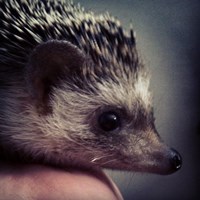The Balicani (pl. Balicani) is a common predatory fauna monster usually found in the Syliras region. Nocturnal and elusive, Balicani are vicious creatures that are part snake and part bat, with beautifully patterned wings and scaly bodies. Despite their modest numbers in the wild, they are, surprisingly, rarely encountered by humans.
History and Overview
Like most creatures, the Balicani had been smaller creatures before the Valterrian exploded upon the world. They inhabited the forests and mountains around what is now the Suvan sea, feeding almost exclusively on rodents and smaller birds. They were also much more common in numbers, and tended to congregate in large numbers unlike today.
The sundering of the world saw the Balicani population destroyed almost utterly, with only a handful of specimens surviving. During the harsh years which ensued, the surviving males began to compete for dominance over the much scarcer females, and thus only the largest and most powerful ones were able to produce progeny. These large males eventually bred even larger offspring, thus contributing to the evolution of these creatures from considerably moderate, to very large in size.
Balicani are among the most terrifying creatures to meet in the Syliran region, with these encounters resulting in death or maiming more often than not. Fortunately such meetings are rare, for Balicani are very rarely active during daytime, and people in the countrysides have learned how to avoid them.
They are extremely difficult to kill or even combat at night, and their ability to swoop in and away from danger makes them particularly dangerous for stationary and slow, heavily-armored combatants. They attack using their powerful jaws and sharp serrated teeth, but would also employ the tail and wings for attack purposes.
They are also extremely territorial and solitary, with each having the ability to secrete a very foul liquid from its salivary glands to use for marking. Once this boundary is crossed a Balicani would stop at nothing until the intruder is either driven out or killed.
Appearance
The Balicani are some of the strangest looking creatures that Mizahar has to offer. They look much like oriental dragons or chimeras in the sense that they are a mixed amalgam of creatures; it has the body, tail and scales of a snake, the wings, horns and jaws of a dragon, and the face and hair of a bat.
They can grow up to 15 feet in length from head to the tip of the tail, with a 20 foot wingspan and around 350 pounds in weight. Their heads, elongated by their thick, muscular jaws, can grow to around 10 inches long. It takes several years for them to reach this full size, however, which drops normal Balicani parameters to around 6 feet in body length, a 13 foot wingspan and a billed weight of 175 pounds. The body is thick and strong, with hard scales adorning the outer skin. Furrier parts of the body include the belly, face and throat area.
Balicani horns are almost of no commercial value. Extremely hard and tough to fashion, they are strangely combustible due to the oily recess which it gives out, which is how they sweat. These mildly sharp ornaments can grow to around two feet long, and can also be used to spear prey.
Triple rows of jagged, serrated teeth line their jaws, with each tooth capable of reaching an inch and a half in length. Much like with a shark, a broken tooth is easily replaceable, for Balicani never stop growing teeth. Due to the nature of their prey, Balicani teeth are constantly renewed and produced. By the time a fully grown individual reaches death, it would have shed around 1000 teeth on average.
Diet
Strictly carnivorous, Balicani normally feed on small animals and birds, but would not hesitate to take down larger prey such as livestock and large dogs. There have been reports of massive individuals carrying away fully grown cows at night, but these have not been verified.
Humans and other sentient creatures are not typically part of a Balicani's diet, but none would think twice about killing and eating them when given the chance. Old and injured individuals have been known to become man-eaters; one particularly famous incident of a Balicani or a very similar creature killing and eating a human happened in a border fortress near Syliras, when a couple of Syliran Knights were attacked. One was killed and carried off, while the other was left maimed for life.
Reproduction and Social Structure
Balicani mature very slowly, with sexual maturity settling in around 7 years after birth. Mating has been observed to be done once every two seasons, with females having a gestation period of only around 5 months. Once the female gives birth, it takes a few weeks or so before they are ready for mating once more. The eggs are round and reptilian, with very high nutritional value for both consumers and the mother; these are extremely rare to acquire as they are hatched within the mother. These offspring are then either regurgitated or digested, depending on their ability to call out to the mother.
Social structures are virtually non-existent with these creatures due to their nature. Male Balicani would fight and kill one another over territory and potential mates without a qualm, which is why they retain a healthy amount of distance away from one another.
- Getting Started
- Help
- Master Lists
- Useful Links
- Features
Balicani
(This is a thread from Mizahar's fantasy role playing forum. Why don't you register today? This message is not shown when you are logged in. Come roleplay with us, it's fun!)Moderator: Scribes
11 posts • Page 1 of 2 • 1, 2
-

Sorian - The wheels of life have slowly fallen off
- Posts: 225
- Words: 202697
- Joined roleplay: December 27th, 2009, 8:45 pm
- Location: Cyphrus plains
- Blog: View Blog (5)
- Race: Akalak
- Character sheet
- Scrapbook
- Medals: 2
-


-

Gossamer - Words reveal soul.
- Posts: 21154
- Words: 6363131
- Joined roleplay: March 23rd, 2009, 4:40 pm
- Location: Founder
- Blog: View Blog (24)
- Race: Staff account
- Office
- Scrapbook
- Plotnotes
- Medals: 11
-


-


-


-


-


-

Liminal - Atelerix albiventris
- Posts: 1135
- Words: 256313
- Joined roleplay: March 24th, 2009, 7:09 am
- Location: Abura / The Hedge
- Blog: View Blog (3)
- Race: Staff account
- Medals: 2
-


-

Sorian - The wheels of life have slowly fallen off
- Posts: 225
- Words: 202697
- Joined roleplay: December 27th, 2009, 8:45 pm
- Location: Cyphrus plains
- Blog: View Blog (5)
- Race: Akalak
- Character sheet
- Scrapbook
- Medals: 2
-


-

Gossamer - Words reveal soul.
- Posts: 21154
- Words: 6363131
- Joined roleplay: March 23rd, 2009, 4:40 pm
- Location: Founder
- Blog: View Blog (24)
- Race: Staff account
- Office
- Scrapbook
- Plotnotes
- Medals: 11
-


-


-


-


-


-

Sorian - The wheels of life have slowly fallen off
- Posts: 225
- Words: 202697
- Joined roleplay: December 27th, 2009, 8:45 pm
- Location: Cyphrus plains
- Blog: View Blog (5)
- Race: Akalak
- Character sheet
- Scrapbook
- Medals: 2
-


-

Cayenne - Jungle Queen
- Posts: 1839
- Words: 440090
- Joined roleplay: March 26th, 2009, 3:48 pm
- Location: Depths of Falyndar
- Blog: View Blog (5)
- Race: Staff account
- Office
- Scrapbook
- Medals: 4
-


-

-

Sorian - The wheels of life have slowly fallen off
- Posts: 225
- Words: 202697
- Joined roleplay: December 27th, 2009, 8:45 pm
- Location: Cyphrus plains
- Blog: View Blog (5)
- Race: Akalak
- Character sheet
- Scrapbook
- Medals: 2
-


-

Gossamer - Words reveal soul.
- Posts: 21154
- Words: 6363131
- Joined roleplay: March 23rd, 2009, 4:40 pm
- Location: Founder
- Blog: View Blog (24)
- Race: Staff account
- Office
- Scrapbook
- Plotnotes
- Medals: 11
-


-


-


-


-


-

Cayenne - Jungle Queen
- Posts: 1839
- Words: 440090
- Joined roleplay: March 26th, 2009, 3:48 pm
- Location: Depths of Falyndar
- Blog: View Blog (5)
- Race: Staff account
- Office
- Scrapbook
- Medals: 4
-


-

11 posts • Page 1 of 2 • 1, 2
Who is online
Users browsing this forum: No registered users and 0 guests

 This was clever thinking, but it makes no sense to me... maybe they are like seahorses or something where the male carries the baby... or maybe they are just live birthed? I have no idea about this... but I kinda went 'huh' after reading it.
This was clever thinking, but it makes no sense to me... maybe they are like seahorses or something where the male carries the baby... or maybe they are just live birthed? I have no idea about this... but I kinda went 'huh' after reading it.
